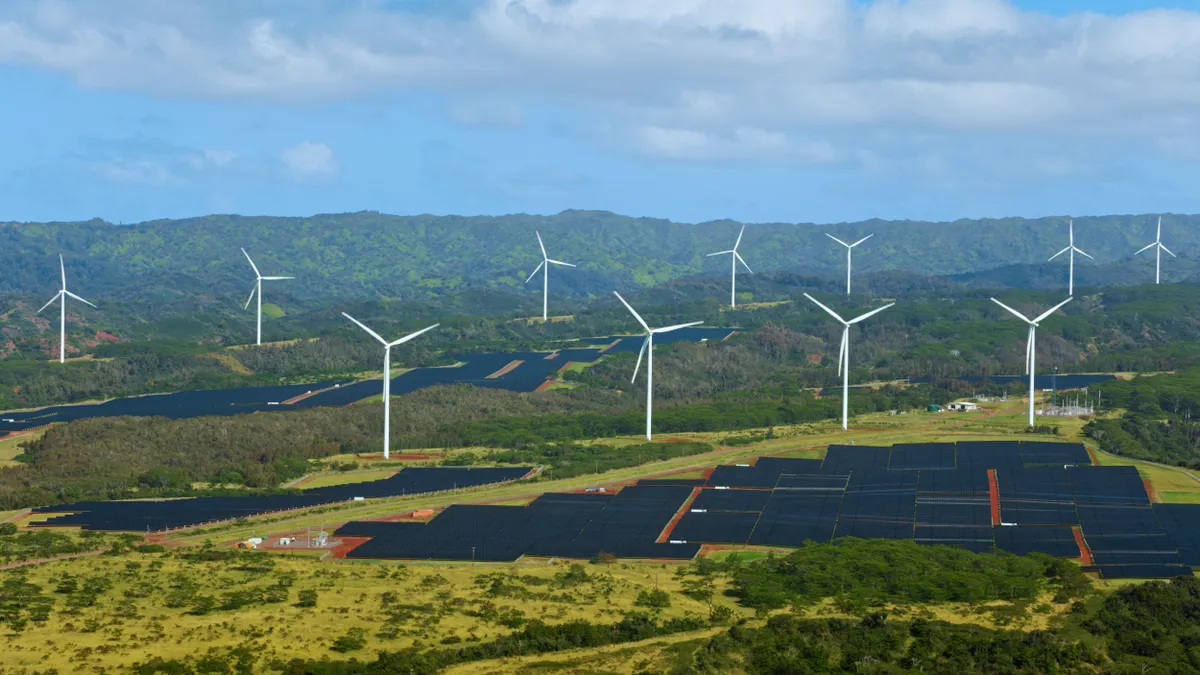Dive Brief:
- Energy storage developer Plus Power has begun operating its 185 MW/565 MWh Kapolei Energy Storage facility on Oahu, Hawai’i, part of the state’s strategy to replace a 180 MW AES coal plant that was retired in September 2022, the company announced Thursday.
- The battery facility will also help increase the efficiency of the existing thermal fleet, according to Plus Power. “It's the first time a battery has been used by a major utility to balance the grid: providing fast frequency response, synthetic inertia, and black start. This project is a postcard from the future — batteries will soon be providing these services, at scale, on the mainland,” Brandon Keefe, Plus Power's executive chairman, said in a statement.
- According to modeling from Hawaiian Electric, the facility will help reduce the company’s renewable energy curtailment by 69% and integrate 10% more utility-scale renewables into its system in the first five years that it is online.
Dive Insight:
The Kapolei Energy Storage project includes 158 Tesla Megapack lithium iron phosphate batteries, and is designed to respond to grid needs within 250 milliseconds, rather than the minutes it would take a combustion plant to come online, according to Plus Power.
“This is the kind of plant we’ll be seeing all over the country. By this summer, in time for heat wave season, we will have a total of seven plants like this operating in Arizona and Texas as well as this one in Hawaii,” Brandon Keefe, executive chairman at Plus Power, said in an email.
Back in 2021, Hawai’i regulators had raised concerns that following the AES coal plant’s retirement, and thanks to delays to planned renewables projects, the Kapolei Energy Storage facility would initially charge off fossil fuel generation.
The project receives charge from all generation sources connected to the grid, so is charged by both renewable sources and fossil fuel generators, Pai said.
“As we add more renewable resources to the grid over time, KES will increasingly be charged by renewable energy,” Pai added.
Meanwhile, on Jan. 8, Hawaiian Electric initiated half-hour rolling outages shortly before 8 p.m., utility spokesperson Darren Pai said in an email. The blackouts were caused by a combination of events, including severe rains, low solar production, shrinking wind generation and unexpected outages at two generating units at the Waiau Power Plant.
The project was online and available for Hawaiian Electric to charge and discharge, which they did ahead of the rolling blackouts, Keefe said.
Looking to the rest of the year, Hawaiian Electric expects to have sufficient generation to meet customer needs, but “we are always looking for ways to improve our ability to respond to emergencies and unforeseen events, provide better service to our customers, harden our grid to make it more resilient and incorporate more renewable energy,” Pai said.
The utility is also looking at strategies to reduce the chance of more blackouts in the future, including working with regulators and developers to add more renewable energy and storage to its grids, he said.
“In addition, we continue to work on hardening our transmission and distribution systems to make our grids more resilient. The Hawaii Public Utilities Commission is currently reviewing our application for a $190 million grid resilience program,” Pai added.















